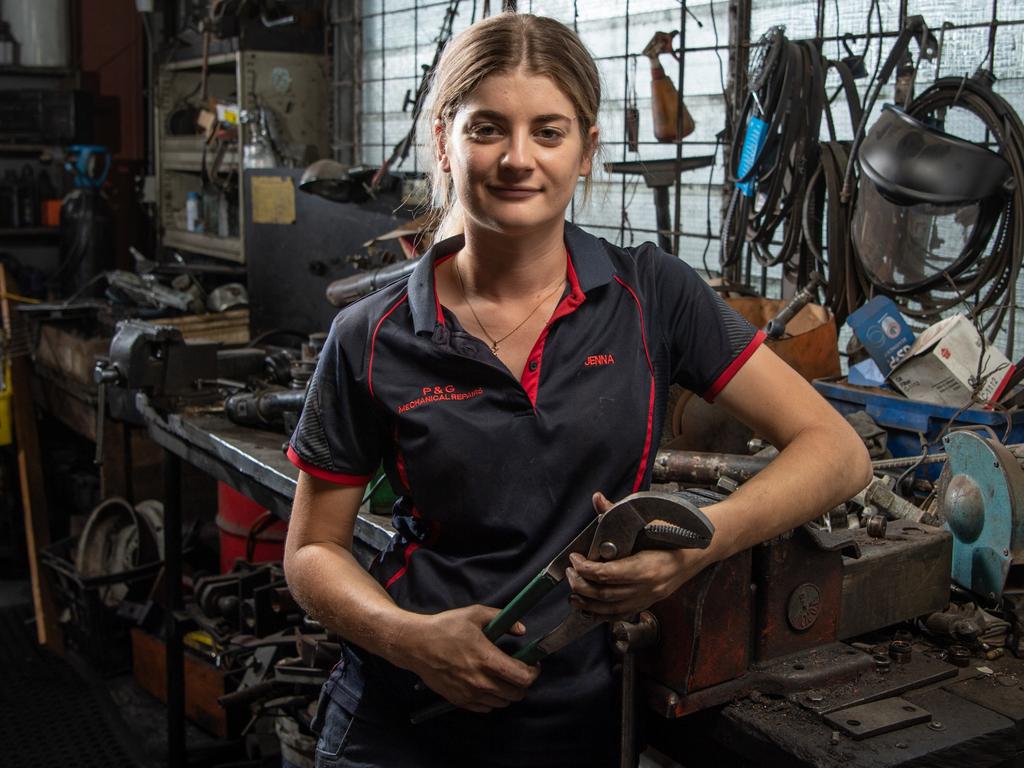More than 38,000 workers needed for 10 occupations
Government figures reveal the 10 occupations that have experienced the largest increase in hiring over the past year. See the list.
There are jobs galore in Australia right now, with three in four occupations recording more available opportunities this February than last.
It is a sign of business confidence and that government investment is encouraging employment, despite the roles being available because many employers are refilling positions that disappeared last year or are struggling to find talent to replace international workers who returned home.
It is particularly good news for first-time workers looking for a foot in the door and experienced workers in high-demand fields who can negotiate for higher salaries.

The Federal Government’s Vacancy Report for February reveals the largest growth in hiring activity was in 10 occupations.
GENERAL SALES ASSISTANTS
There were 7100 vacant positions available in February – 1551 more than the year before, a 28 per cent increase year on year.
Recruitment, Consulting and Staffing Association advocacy and policy head Brooke Lord says there is always hiring in this space as there is always high turnover, but some stores may be restaffing now that COVID-19 is under control.
“There are scenarios where (employers) have held off on hiring in the COVID environment and they are now getting up to regular speed,” she says.
REGISTERED NURSES
With 5378 vacant positions across Australia, demand was up 38 per cent on last year – equal to 1478 more roles.
Lord says vacancies have been “exacerbated” by the pandemic.
“There has been greater need for staffing, particularly during outbreaks and scenarios where people have to stand down for testing and isolation,” she says.
“There is a need around the vaccine rollouts and assisting in the broader health sector around infection control measures.
“There have always been vacancies in this space and the industry relies heavily on nurses from overseas but border closures have impacted this.”

GENERAL CLERKS
This occupational group had the largest number of vacancies in February, at 8584 roles.
It is 1304 more roles, or 18 per cent higher, year on year.
General clerks perform tasks such as recording, classifying and filing information; photocopying documents and transcribing and proofreading copy.
WAITERS
An extra 1110 positions were available compared to a year earlier – a 63 per cent increase, which brought February’s total to 2866 vacancies.
Lord says it is not a case of new restaurants opening and needing staff but rather a lack of skilled workers to fill returning roles as the economy bounced back.
They had previously relied heavily on international students and people on working holiday visas – both now unable to enter the country.
She says many Australians that previously worked as waiters have also left the hospitality sector in pursuit of careers they perceived as more secure.
“It’s a good time to be school leaver,” she says.
“There should be a raft of opportunities there for people – no question.”
COMMERCIAL CLEANERS
Opportunities have almost doubled since the pandemic, with 1820 vacancies now available – up by 894 compared to last year.
Lord says demand for workers is a result of increased need for workplace cleaning to comply with COVID plans, as well as a lack of overseas workers living in Australia.
“It’s probably also suffering from the JobSeeker payment situation as a lot of the salaries earned by a standard cleaner were not monstrously larger than what the JobSeeker payments were, which makes it harder to attract Australians,” she says.

BAR ATTENDANTS AND BARISTAS
There were 2121 vacant positions for this group of workers, which is 801 more than last year (up 61 per cent).
Lord says bar attendants, baristas and wait staff all draw from the same pool of workers so have the same challenges filling roles.
“I spoke to good half dozen (recruiters) and they all say it’s near impossible to find workers,” she says.
“(Some employers) are bussing them from interstate for major events.”
MOTOR MECHANICS
Employers needed 2968 qualified and apprentice motor mechanics in February, 37 per cent or 795 more than a year earlier.
Apprentice Jenna Hayhoe says there are many jobs available in her line of work, but a lack of people willing to give the job a go.
The 22-year-old is studying her Certificate III in Light Automotive through TAFE Queensland and working at her parents’ workshop, P & G Mechanical Repairs.
“Definitely, I think people are willing to give young people a go,” she says.
“I think there are a lot of openings but a lot of people don’t want to put in the hard yards and do an apprenticeship because it is quite a commitment.”
Hayhoe says he job suits anyone who is passionate about cars, hardworking and willing to learn off other people.
“A lot of the mechanics that have been in the industry a while have a lot to teach that you can’t learn just doing it yourself,” she says.

AGED AND DISABILITY CARERS
Demand in this sector is up 41 per cent, with 2729 roles in the market in February, up by 794.
Lord says there have always been a lot of vacancies but they increased following the Royal Commission into Aged Care Quality and Safety and the COVID-19 pandemic.
Not only are extra staff needed to cover for workers when isolating and awaiting test results, but border closures have excluded overseas workers from the industry.
“Some insights suggest at least 75 per cent of the carer – not registered nurse – workforce is made up of migrants and international students,” she says.
CHEFS
As many as 2686 restaurants, cafes and venues were looking for chefs – 782 more than before the pandemic (up 41 per cent).
Like most hospitality roles, Lord says increased vacancies are the result of a lack of overseas workers.
She says it has created opportunities for skilled Australians.
“If you are a qualified chef you are in a good position to negotiate wages,” she says.

TRUCK DRIVERS
Demand for truck drivers is up 50 per cent since the pandemic, with vacancies increasing from 1350 to 2019 over the past 12 months.
“In some areas, huge government funding for civil infrastructure construction attracts truck drivers to project sites which means they are not available in other areas,” she says.
“Also, consumers have transitioned to online shopping and ordering in, so that has increased the need for courier drivers.”
Originally published as More than 38,000 workers needed for 10 occupations



